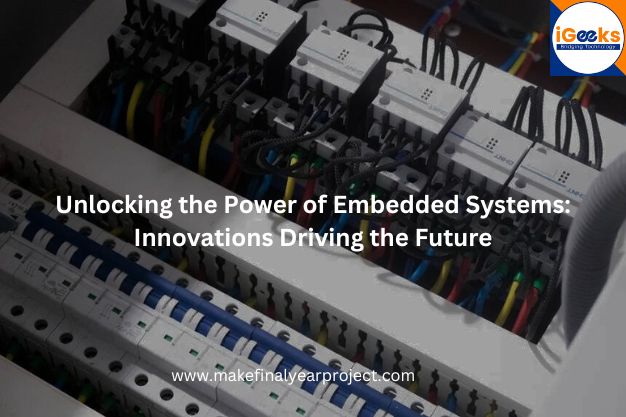By iGeeks Technologies:
Embarking on a research journey often involves the meticulous analysis of data, both qualitative and quantitative. In the realm of academia, particularly at the PhD level, the stakes are high, and precision in statistical analysis is paramount. At iGeeks Technologies, our team of experienced statisticians is here to provide PhD statistics help, focusing on the utilization of SPSS (Statistical Package for the Social Sciences). Let’s delve into the intricacies of analyzing qualitative and quantitative data for your research endeavors.
Unlocking the Power of Embedded Systems: Innovations Driving the Future
Embedded systems have evolved from simple microcontroller-based devices to powerful computing platforms driving innovations across various industries. Today, these compact yet capable systems are at the heart of technological advancements, enabling connectivity, automation, and intelligence in our increasingly digital world.
The Evolution of Embedded Systems
Embedded systems have come a long way since their inception. Initially used in limited applications such as industrial control systems and consumer electronics, they have now expanded their reach to diverse sectors including healthcare, automotive, aerospace, and more. The evolution of embedded systems has been driven by advancements in microprocessor technology, miniaturization, and the integration of various sensors and communication protocols.
Innovations Driving the Future
Several key innovations are shaping the future of embedded systems:
- Internet of Things (IoT): The IoT revolution has propelled embedded systems to new heights, enabling seamless connectivity and data exchange between devices. Embedded systems play a crucial role in IoT deployments, serving as the backbone of smart homes, cities, and industries.
- Artificial Intelligence (AI): AI integration has transformed embedded systems into intelligent devices capable of analyzing data, making decisions, and adapting to changing environments in real-time. From autonomous vehicles to smart assistants, AI-powered embedded systems are revolutionizing how we interact with technology.
- Edge Computing: Edge computing brings computational power closer to the data source, reducing latency and enhancing efficiency. Embedded systems at the edge enable faster processing of data, making them ideal for applications requiring real-time decision-making, such as industrial automation and surveillance systems.
Real-World Applications
The impact of embedded systems innovations can be seen in various real-world applications:
- Smart Healthcare Systems: Embedded systems monitor patient vital signs, deliver medication, and enable remote patient monitoring, improving healthcare delivery and patient outcomes.
- Autonomous Vehicles: Embedded systems power self-driving cars, enabling them to perceive their surroundings, navigate roads, and make split-second decisions to ensure passenger safety.
- Industrial Automation: Embedded systems control manufacturing processes, optimize energy usage, and enable predictive maintenance, enhancing productivity and reducing downtime in factories.
Conclusion
In conclusion, embedded systems represent the cornerstone of modern technological advancement, driving innovation across a wide array of industries. With their evolution from simple microcontroller-based devices to sophisticated computing platforms, embedded systems continue to revolutionize connectivity, automation, and intelligence in our digital era.
As we look to the future, the importance of embedded systems will only grow, with ongoing innovations such as IoT, AI integration, and edge computing pushing the boundaries of what is possible. By embracing the power of embedded systems, we unlock a world of opportunities for transformative change and progress.
Embark on the journey of discovery with embedded systems and witness firsthand the incredible impact they have on shaping the future of technology and society as a whole.



